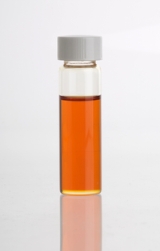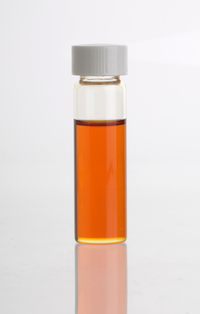
Artemisia pallens
Encyclopedia
Artemisia pallens, Dhavanam , is an aromatic herb, In genus of small herbs or shrubs, xerophytic In nature. The flowers are racemose panicles bear numerous small yellow flower heads or capitula, but the silvery white silky covering of down gives the foliage a Grey or white appearance.
Davanam has alternate pinnasect leaves (leaf which is divided into opposite pairs of lobes cut almost to the midrib In narrow divisions) or palmatisect leaves (the green tissue is divided into several segments not fully separated At the base).
, Karnataka
, Maharashtra
and Tamil Nadu
states in India.
Artemisia pallens is a preferred food for the larvae of a number of butterfly species.
, ethyl cinnamate
, bicyclogermacrene, 2-hydroxyisodavanone, farnesol
, geranyl acetate, sesquiterpene lactone
s, and germacranolide
s are also found. The amount of davanone and linalool decreased while those of (Z)− and (E)−methyl cinnamate, (E)−ethyl cinnamate, bicyclogermacrene, davana ether, 2-hydroxyisodavanone, and farnesol increased from flower heads emergence stage to the initiation of seed set stage. Five compounds, (Z)− and (E)−methyl cinnamates, (Z)− and (E)−ethyl cinnamates, and geranyl acetate, were identified for the first time in davana oil.
 The leaves and flowers yield an essential oil known as oil of Davana. Several species yield essential oil
The leaves and flowers yield an essential oil known as oil of Davana. Several species yield essential oil
and some are used as fodder
, some of them are a source of the anthelmintic
chemical santonin
. Davana blossoms are offered to Shiva
, the God of Transformation, by the faithful, and decorate his altar throughout the day. Oral administration of high doses aqueous/methanolic extract from the aerial parts of the plants was observed to reduce blood glucose levels in glucose−fed hyperglycemic and alloxan
-treated rabbits and rats.
Davanam has alternate pinnasect leaves (leaf which is divided into opposite pairs of lobes cut almost to the midrib In narrow divisions) or palmatisect leaves (the green tissue is divided into several segments not fully separated At the base).
Cultivation
It is commercially cultivated for its fragrant leaves and flowers. It has two distinct morphological types, one in which the plants are short in stature and flowering sets in early, and the other in which plants are tall and flowering sets in later. It grows from seeds and cuttings and reaches maturity in four months. The plant is woody in the lower part of the stem, but with yearly branches. Seen mostly grown in Andhra PradeshAndhra Pradesh
Andhra Pradesh , is one of the 28 states of India, situated on the southeastern coast of India. It is India's fourth largest state by area and fifth largest by population. Its capital and largest city by population is Hyderabad.The total GDP of Andhra Pradesh is $100 billion and is ranked third...
, Karnataka
Karnataka
Karnataka , the land of the Kannadigas, is a state in South West India. It was created on 1 November 1956, with the passing of the States Reorganisation Act and this day is annually celebrated as Karnataka Rajyotsava...
, Maharashtra
Maharashtra
Maharashtra is a state located in India. It is the second most populous after Uttar Pradesh and third largest state by area in India...
and Tamil Nadu
Tamil Nadu
Tamil Nadu is one of the 28 states of India. Its capital and largest city is Chennai. Tamil Nadu lies in the southernmost part of the Indian Peninsula and is bordered by the union territory of Pondicherry, and the states of Kerala, Karnataka, and Andhra Pradesh...
states in India.
Artemisia pallens is a preferred food for the larvae of a number of butterfly species.
Chemistry
Davanone, davan ether, davana furan and linalool are the major constituents of davana oil. Methyl cinnamateMethyl cinnamate
Methyl cinnamate is the methyl ester of cinnamic acid and is a white or transparent solid with a strong, aromatic odor. It is found naturally in a variety of plants, including in fruits, like strawberry, and some culinary spices, such as Sichuan pepper and some varieties of basil...
, ethyl cinnamate
Ethyl cinnamate
Ethyl cinnamate is the ester of cinnamic acid and ethanol. It is present in the essential oil of cinnamon. Pure ethyl cinnamate has a "fruity and balsamic odor, reminiscent of cinnamon with an amber note"....
, bicyclogermacrene, 2-hydroxyisodavanone, farnesol
Farnesol
Farnesol is a natural organic compound which is an acyclic sesquiterpene alcohol found as a colorless liquid. It is insoluble in water, but miscible with oils...
, geranyl acetate, sesquiterpene lactone
Sesquiterpene lactone
Sesquiterpene lactones are a class of chemical compounds; they are sesquiterpenoids and contain a lactone ring, hence the name....
s, and germacranolide
Germacranolide
Germacranolides are a group of natural chemical compounds classified as sesquiterpene lactones. They are found in a variety of plant sources....
s are also found. The amount of davanone and linalool decreased while those of (Z)− and (E)−methyl cinnamate, (E)−ethyl cinnamate, bicyclogermacrene, davana ether, 2-hydroxyisodavanone, and farnesol increased from flower heads emergence stage to the initiation of seed set stage. Five compounds, (Z)− and (E)−methyl cinnamates, (Z)− and (E)−ethyl cinnamates, and geranyl acetate, were identified for the first time in davana oil.
Uses

Essential oil
An essential oil is a concentrated hydrophobic liquid containing volatile aroma compounds from plants. Essential oils are also known as volatile oils, ethereal oils or aetherolea, or simply as the "oil of" the plant from which they were extracted, such as oil of clove...
and some are used as fodder
Fodder
Fodder or animal feed is any agricultural foodstuff used specifically to feed domesticated livestock such as cattle, goats, sheep, horses, chickens and pigs. Most animal feed is from plants but some is of animal origin...
, some of them are a source of the anthelmintic
Anthelmintic
Anthelmintics or antihelminthics are drugs that expel parasitic worms from the body, by either stunning or killing them. They may also be called vermifuges or vermicides .-Pharmaceutical classes:...
chemical santonin
Santonin
Santonin is a drug which was widely used in the past as an anthelminthic, a drug that expels parasitic worms from the body, by either killing or stunning them. Santonin was formerly listed in U.S...
. Davana blossoms are offered to Shiva
Shiva
Shiva is a major Hindu deity, and is the destroyer god or transformer among the Trimurti, the Hindu Trinity of the primary aspects of the divine. God Shiva is a yogi who has notice of everything that happens in the world and is the main aspect of life. Yet one with great power lives a life of a...
, the God of Transformation, by the faithful, and decorate his altar throughout the day. Oral administration of high doses aqueous/methanolic extract from the aerial parts of the plants was observed to reduce blood glucose levels in glucose−fed hyperglycemic and alloxan
Alloxan
Alloxan is an oxygenated pyrimidine derivative. It is present as alloxan hydrate in aqueous solution.-History:...
-treated rabbits and rats.
Uses of Davana oil
- Davana oil is used in making perfumes of sweet and fruity fragrances.
- When applied on the skin, Davana is said to smell differently on different persons. This peculiar property is highly valued in high class perfumery to create fragrances with truly individual notes.
- Davana leaves and stalks are used in making bouquets, garlands, fresh or dry flower arrangements.
Popular culture
- It has even inspired film lyricists ("Madurai Marikozhundu Vasam" is one of the more popular numbers) to come up with romantic numbers.

